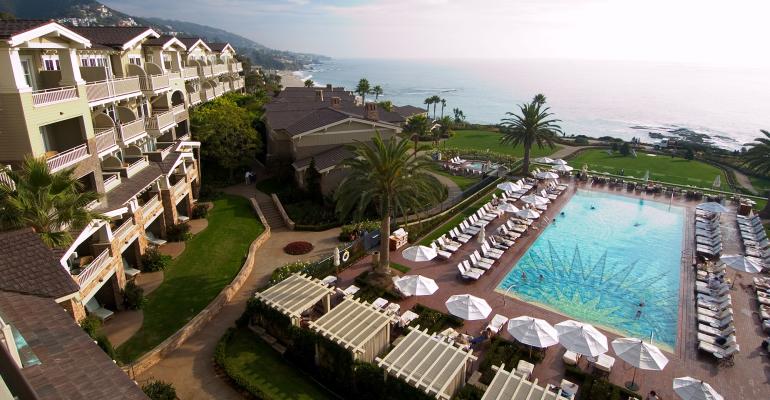After a surge of activity earlier in the year, many hotel investors are putting their wallets back in their pockets. The disruption has been caused by rising interest rates and the potential for a recession in 2023.
Some hotel properties are still trading hands. Some recent nine and 10 figure transactions have made headlines. But they’ve also distorted the data on transactions. As a result of these deals, average prices are still high and cap rates are still low. Sales of individual hotel properties may be a better indicator of the health of the market overall than those averages. And investors spent less to buy individual hotel properties in October 2022 than any month since 2020, according to MSCI. “The headline increase was a function of megadeal activity,” says Jim Costello, chief economist for MSCI.
For example, the 260-room Montage Laguna Beach, located on the rugged Southern California coastline between Los Angeles and San Diego, Calif., sold for an estimated $650 million, or $2.5 million per key, to Texas billionaire Tilman Fertitta. It's just one of several deals to where luxury, resort hotels traded hands.
“There’s a perception that resorts are a bit more insulated from recessions,” says Jan Freitag, national director for hospitality market analytics at CoStar.
Investors are also still closing giant deals for portfolios of hotel properties. In a November deal valued at $1.1 billion, Flynn Properties and Värde Partners, a leading global alternative investment firm, bought an 80 percent ownership stake in a portfolio of 89 select service and extended stay hotels. The sellers, affiliates of Highgate and Cerberus Capital Management, retain 20 percent ownership of the portfolio and Highgate will continue to manage the properties.
The deal “speaks to resilience of the limited-service sector of the market as well,” says Freitag.
A few giant deals like these can mask the deepening weakness in the market for hotel properties. Investors spent $4.6 billion to buy hotel properties in October 2022, according to MSCI. That’s a 28 percent increase from October 2021—and 2021 had seemed very busy at the time. But nearly two-thirds of the money investors spent on hotel properties in October 2022 came from just one deal: Brookfield AM’s acquisition of Watermark Lodging Trust.
If you leave the deal for Watermark Lodging Trust out of the total and just count sales of single hotel assets, then investors spent less than $2 billion in October. That 50 percent less than they spent in October 2021.
Investors are also not bidding up prices for hotel as quickly as they did earlier in the recovery from the pandemic. Prices for hotel properties grew as an annualized pace of just 1.3 percent in October 2022, according to Moody’s Commercial Property Price Index. That’s better than the prices for most other types of commercial real estate, which shrank in October. But it’s a slower pace of growth than in previous months. The CPPI for hotels grew at an annualized pace of more than 10 percent throughout the first quarter of 2022.
Cap rates still averaged less than 8.4 percent in October, according to MSCI. That’s roughly the same as September. The average cap rate wobbled within a dozen basis points of 8.4 percent for most of 2022.
Strong demand for hotel rooms
The fundamental demand for hotel rooms has come a very long way since the depths of the coronavirus pandemic—and that is helping to support strong prices.
“Demand has basically recovered on a national level,” Freitag says.
The demand for hotel rooms is now roughly the same as it had been in 2019. It was slightly lower in October 2022 than October 2019. It had been slightly higher in September 2019 than September 2019. The strong recovery in demand has still left the occupancy rate for hotel rooms few percentage points lower than it was before the pandemic—64 percent in October 2022, compared to 67.6 percent in October 2019. That’s because developers have continued to open new hotel rooms.
“Because supply has grown over the last three years, occupancy is still lower than it was in 2019,” says Freitag.
However, the demand for hotel rooms is still strong enough to support higher nightly rates for hotel rooms, averaging $149.54 from January through October 2022. That up from $131.98 over the same period in 2019.

